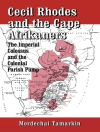This electronic version has been made available under a Creative Commons (BY-NC-ND) open access license. An electronic version of this book is also available under a Creative Commons (CC-BY-NC-ND) license, thanks to the support of the Wellcome Trust. The Industrial Revolution produced injury, illness and disablement on a large scale and nowhere was this more visible than in coalmining.
Disability in the Industrial Revolution sheds new light on the human cost of industrialisation by examining the lives and experiences of those disabled in an industry that was vital to Britain’s economic growth. Although it is commonly assumed that industrialisation led to increasing marginalisation of people with impairments from the workforce, disabled mineworkers were expected to return to work wherever possible, and new medical services developed to assist in this endeavour. This book explores the working lives of disabled miners and analyses the medical, welfare and community responses to disablement in the coalfields. It shows how disability affected industrial relations and shaped the class identity of mineworkers. The book will appeal to students and academics interested in disability, occupational health and social history.
Tabella dei contenuti
Introduction 1. Disability and work in the coal economy 2. Medicine and the miner’s body 3. Disability and welfare 4. Disability, family and community 5. The industrial politics of disablement Conclusion Select bibliography Index
Circa l’autore
Julie Anderson is a Senior Lecturer in the History Department at the University of Kent












